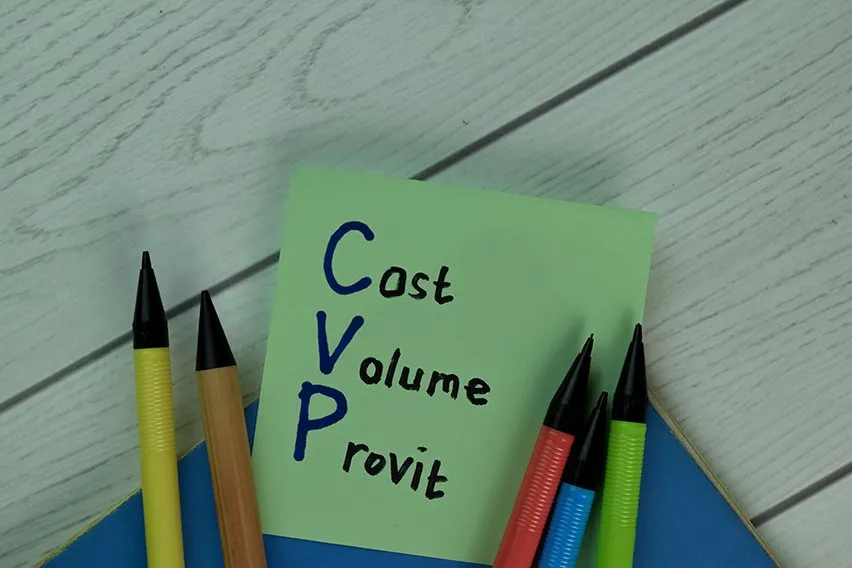High-Low Method: Learn How to Estimate Fixed & Variable Costs

There are a number of accounting techniques used throughout the business world.
These techniques are used for a range of reasons. Whether it’s to figure out the profitability of a product, or getting an overview of the overall financial health of your business.
One such technique is the high-low method.
But what exactly is the high-low method? We’ll take a closer look at how you can utilise this technique and learn how to estimate your fixed and variable costs.
Here’s What We’ll Cover:
What Is the High-Low Method Formula?
What Is an Example of Using the High-Low Method?
What Is the High-Low Method?
The high-low method is an accounting technique that is used to separate out your fixed and variable costs within a limited set of data.
The process involves taking both the highest and lowest levels of activity and comparing the total costs at each level. It is possible to also work out the fixed and variable costs by solving the equations. But this is only if the variable cost is a fixed charge per unit of product and the fixed costs remain the same.
While the high-low method is an easy one to use, it also has its disadvantages. Because it relies on two extreme values from only one data set, it can distort costs. This may leave you with a set of inaccurate results.

What Is the High-Low Method Formula?
This technique provides a simple and straightforward way to split fixed and variable components of combined costs. It can do this using a few steps of a formula.
What you’ll need to do first is calculate the variable cost component and fixed cost component. You will then have to put the results of this into the cost model formula. So it would look like this:
Variable Cost Per Unit=(Highest activity cost – Lowest activity cost)(Highest activity units – Lowest activity units)
Once you have calculated the variable cost per unit, you can use this information to calculate the fixed cost:
Fixed Cost = Highest activity cost – (Variable cost per unit x Highest activity units)
or
Fixed cost – Lowest activity cost – (Variable cost per unit x Lowest activity units)
You will then use all of the results of these calculations to figure out the high-low cost using the following formula:
High-Low Cost = Fixed cost + (Variable cost + Unit activity)
What Is an Example of Using the High-Low Method?
If that all seems quite confusing, then let’s use an example to make it seem clearer.
Let’s say that you are running a business producing high end technology products. You need to know what the expected amount of overheads that your production line will incur in the next month.
The overheads cost for the previous four months are as follows:
|
Month |
Cost |
Units |
|
August |
$60,000 |
10,000 |
|
September |
$40,000 |
7,500 |
|
October |
$50,000 |
6,000 |
|
November |
$55,000 |
5,500 |
You are expecting to produce 8,000 units in December.
Step 1: Find Out the Highest and Lowest Activity Level
The highest activity level was in August with 10,000 units. The highest activity cost is $60,000.
The lowest activity level was in November with 5,500 units. The lowest activity cost is $55,000.
Step 2: Calculate the Variable Cost Per Unit
You can use the formula that we laid out earlier to work out your variable cost per unit:
Variable Cost Per Unit = ($60,000 – $55,000)(10,000 – 5,500)
So the calculation would be:
VCPU = $5,000$4,500=$1.11 per unit
Step 3: Calculate the Fixed Cost
Using the formula above:
Fixed Cost = $60,000 – ($1.11 x 10,000) = $48,900

Step 4: Calculate the Total Variable Cost for the New Activity
To do this you would have to multiply the variable cost per unit by the number of units that are expected to be produced in December. This will give you the total variable cost for the month:
Total Variable Cost = $1.11 x 8,000 = $8,880
Step 5: Calculate the Total Cost
Finally, you have to add the fixed cost and variable cost together to get the total cost of overheads for December:
Total Cost = $48,900 + $8,880 = $57,780
Key Takeaways
The high-low method is a straightforward, if not slightly lengthy, way to figure out your total costs.
As with any metric, it comes with its downsides of not being entirely accurate. But anything that uses extreme examples should always be used to give you a rough idea and the results must be taken with a grain of salt.
Are you looking for more business advice on everything from starting a new business to new business practices?
Then check out the FreshBooks Resource Hub.
RELATED ARTICLES

 Discounted Cash Flow (DCF): Formula, Examples & Calculation
Discounted Cash Flow (DCF): Formula, Examples & Calculation What Is the Contribution Margin & How to Calculate It? A Guide
What Is the Contribution Margin & How to Calculate It? A Guide What Is Cost Centre: Definition, Function & Examples
What Is Cost Centre: Definition, Function & Examples What Is CVP Analysis (Cost-Volume-Profit) & How to Perform It?
What Is CVP Analysis (Cost-Volume-Profit) & How to Perform It? How to Calculate Asset Turnover Ratio? Formula & Example
How to Calculate Asset Turnover Ratio? Formula & Example Marginal Cost: Definition, Formula & Examples
Marginal Cost: Definition, Formula & Examples